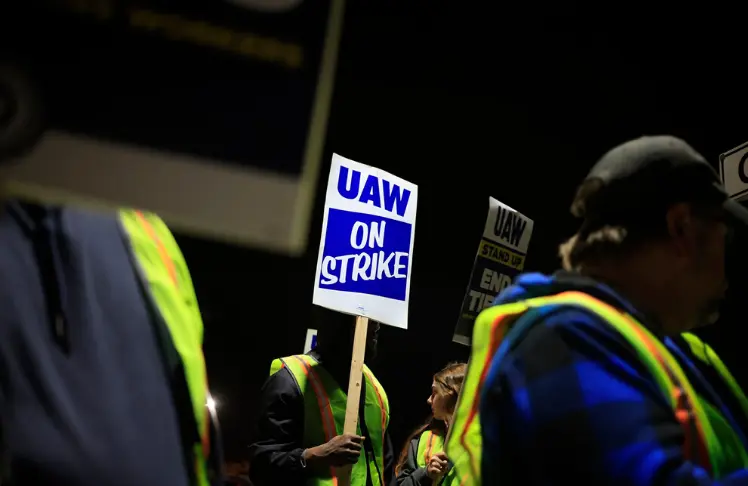
By Chris Isidore and Vanessa Yurkevich, CNN
(CNN) — UAW President Shawn Fain said the union would not expand its strike against the Big Three automakers on Friday, but that the UAW stood ready to add more workers to the picket lines at any time as its labor action enters a new phase.
“We are prepared at any time to call on more locals to stand up and walk out,” Fain said in a livestream update on negotiations. He later added: “We changed the rules. Now there is only one rule – pony up.”
The announcement marks a tactical shift, Fain said. Previously the UAW had announced strike expansions on Fain’s weekly Friday updates. But now, as part of the union’s strategy to keep the automakers off balance, Fain said strike expansions could come at any day of the week, at any time.
“We’re entering a new phase of this strike, and it demands a new approach,” Fain said. “We’re done waiting until Fridays to escalate our strike.”
This is the first time that the union has gone on strike against GM, Ford and Stellantis at the same time. But rather than shut down any of the companies’ US operations completely, the union has targeted its strike against specific facilities, and then expanded the strike gradually in order to increase pressure at the bargaining table.
But on Wednesday evening the union added Ford’s largest factory, the Kentucky Truck Plant in Louisville, to its list of strike targets, as 8,700 UAW members joined the strike that started on September 15.
It is Ford’s largest factory in the world, assembling heavy duty pickup trucks and full-size SUVs, producing $25 billion in annual sales, or about one-sixth of its revenue. It also produced an estimated $150 million in profits a week, according to an estimate from Colin Langan, auto analyst at Wells Fargo.
The companies are on record as offering members an immediate 10% raise to union members and additional raises totaling 10 percentage points or more during the life of the contracts, which are likely to run through the spring of 2028.
The companies are also agreeing to some kind of return of the cost-of-living adjustment (COLA) to union pay scales to protect workers from rising prices. The union gave up the COLA in 2007, as well as traditional pension plans and health care coverage for retirees for workers hired after the concession contracts reached that year.
In addition, a week ago, Fain announced that GM had agreed to a major union demand to place workers at new and planned EV battery plants under the national master agreement at the company.
GM, Ford and Stellatis have all announced plans to shift from traditional gasoline-powered vehicles to electric vehicles, or EVs. That would end the need for the jobs in their current plants that build engines and transmissions.
All three are in the process of building at least three plants each, almost all in joint ventures with Asian battery makers, that will be used to power EVs. All are expected to pay significantly less than UAW members at those engine and transmission plants are now paid.
Going into negotiations, the companies had insisted the battery plant workers would be employees of the joint ventures, not the companies themselves, and that their pay scale would not be included in this contract.
Details of what GM has agreed upon in relation to workers battery plant workers is not yet known, as GM has not confirmed the tentative agreement on the issue. Ford officials have said they also have been negotiating with the union on the battery plant issue and that progress had been made, without giving details.
The-CNN-Wire
™ & © 2023 Cable News Network, Inc., a Warner Bros. Discovery Company. All rights reserved.















